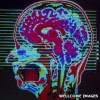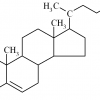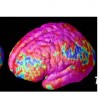Brain tumors snack on cholesterol
Researchers at the University of California Los Angeles and Ohio State University Comprehensive Cancer Center are investigating a new treatment for glioblastoma, the deadliest form of brain cancer. Their paper, out this week in Cancer Discovery, shows how blocking a mechanism involved in cell metabolism and triggered by a cancer gene can reduce brain tumors.
Glioblastoma affects about 18,500 Americans each year, with less than a third surviving. The brain tumors are very difficult to remove as the cancer cells invade surrounding brain tissue. To make matters worse, some people are genetically predisposed to resisting chemotherapy or radiotherapy.
The researchers looked at the cellular mechanism that involves an over-active PI3K signaling pathway. This pathway is stimulated by a gene variant called EGFRvIII, which is present in nearly half of all glioblastomas. The gene variant also switches on a transcription regulator, increasing the activity of the low-density lipoprotein (LDL) receptor. This increases the uptake of LDL, providing more cholesterol for the brain tumor cells to feed on, grow and survive.
The number of LDL receptors was reduced in these experiments by activating an alternative receptor, the nuclear Liver X Receptor. This then caused the cholesterol to be transported back out of the tumor cells using an ABCA1 protein pump. Without the extra cholesterol, the greedy brain tumor cells eventually starve and die.
The good news is that this signaling pathway is not just confined to glioblastomas so this therapy may eventually be used to treat other forms of cancer.
So it’s yet another reason to cut out the eggs, cream and butter and have oatmeal for breakfast!
Guo D, Reinitz F, Youssef M, et al. An LXR agonist promotes glioblastoma cell death through inhibition of an EGFR/AKT/SREBP-1/LDLR-dependent pathway. Cancer Discovery 2011; early online.
(For more on signaling pathways in cancer cells, check out “Pathways to Cancer” @ the Inside Cancer website.)
| Print article | This entry was posted by Amy Nisselle on September 19, 2011 at 11:37 am, and is filed under Inside Cancer. Follow any responses to this post through RSS 2.0. You can leave a response or trackback from your own site. |









